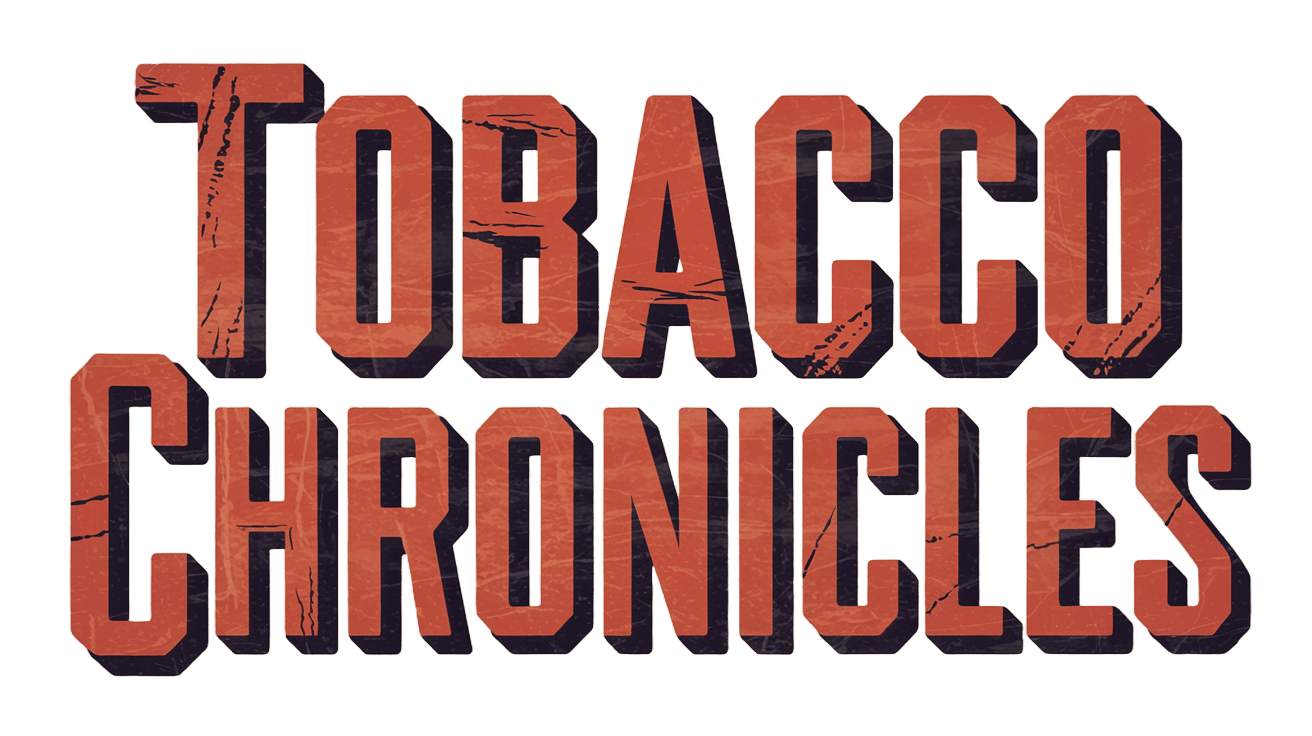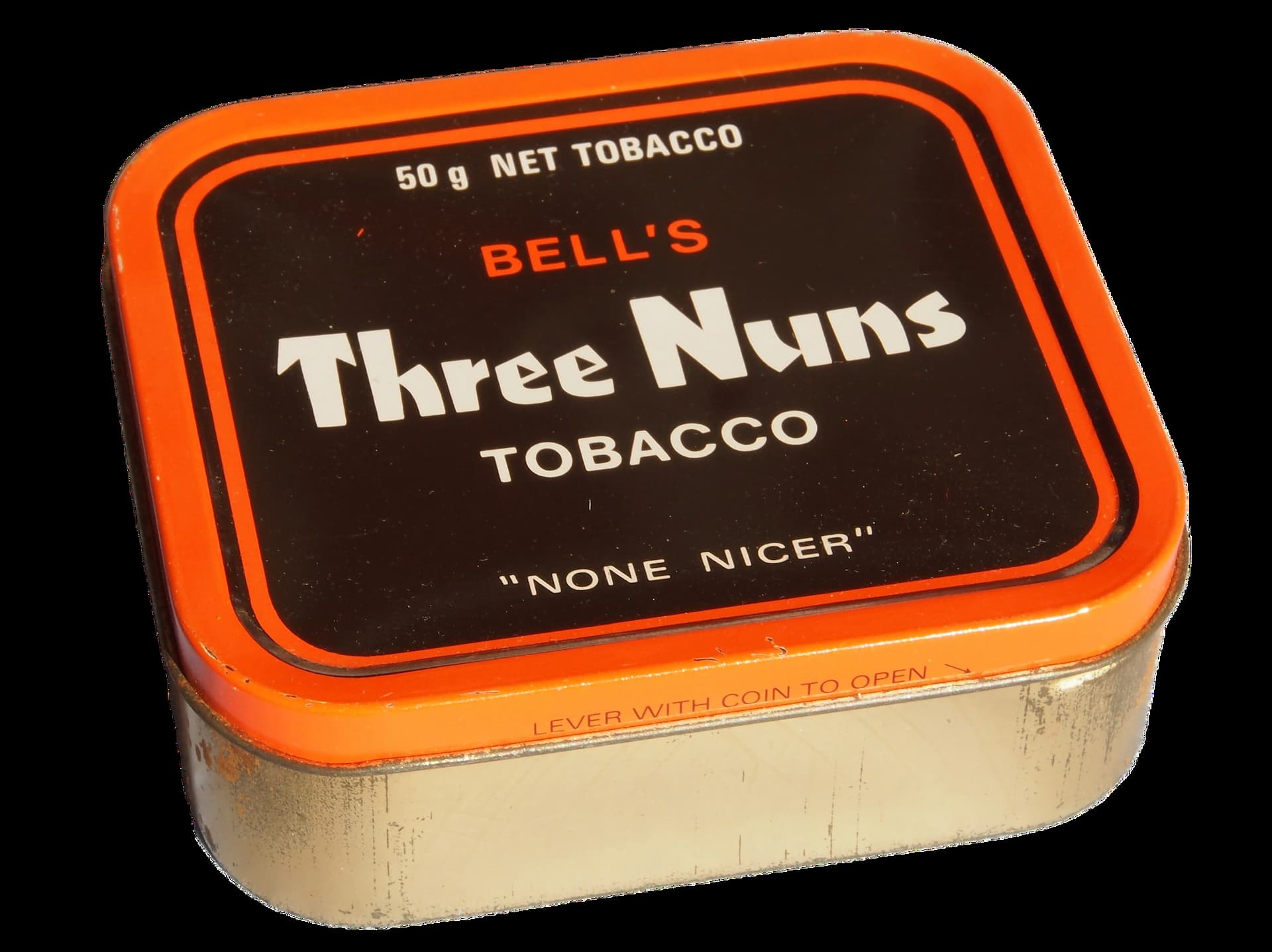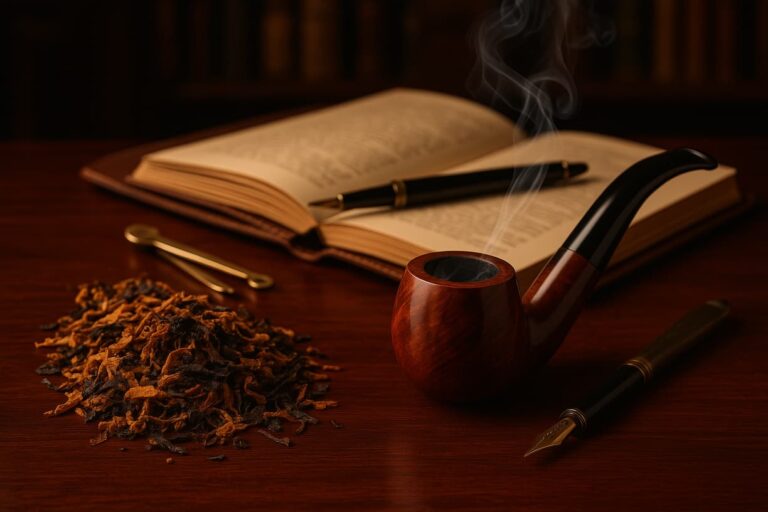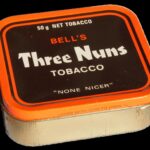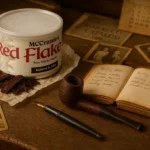Two tins sit before me on my desk. Both bear the same name, both claim the same heritage, both promise the same experience. One delivers on that promise. The other is a beautiful lie.
The Setup
This isn’t going to be your typical tobacco review. Tonight, I’m conducting an experiment that’s part archaeology, part autopsy, and part eulogy. On my left sits a tin of authentic Bell’s Three Nuns from 1998—one of the final years before the soul was ripped out of this legendary blend. On my right, a fresh tin of the modern Mac Baren version, still wearing the Bell’s name like a stolen coat.
I’ve been putting off this comparison for months, maybe years. Part of me didn’t want to confirm what I already suspected: that one of Scotland’s greatest tobacco achievements had been reduced to a marketing exercise. But some truths demand to be told, even when they hurt.
The story of Three Nuns is the story of everything wrong with modern tobacco. It’s a masterclass in how corporate efficiency can murder artistry, how focus groups can destroy tradition, and how the pursuit of profit can hollow out a century of craftsmanship until nothing remains but an empty shell wearing a familiar face.
The Original: Glasgow’s Gift to the World
Let me start with the 1998 Bell’s tin, because this is what Three Nuns was supposed to be. The moment I crack the seal, I’m transported back to a time when tobacco companies understood that their job wasn’t just to sell a product—it was to preserve a tradition.
The tin note is immediately recognizable as something special. This isn’t just Virginia tobacco; this is Virginia tobacco that’s been touched by Scottish genius. The aroma is complex, layered, sophisticated—hints of fruit and spice dancing around a core of pure, sweet Virginia character. But there’s something else, something that speaks to the Perique component that made the original Bell’s blend legendary among those who understood what real tobacco craftsmanship looked like.
The tobacco itself tells a story. These aren’t the loose, casual coins you find in modern tins. These are precisely formed, carefully compressed discs that speak to a manufacturing process that valued consistency and quality over speed and efficiency. Each coin is a small work of art, dark and light tobaccos swirled together in patterns that suggest careful blending rather than mechanical mixing.
I load my Ashford bent billiard—a pipe that seems appropriate for such a distinguished Scottish tobacco—and prepare for what I know will be a journey back in time. The first light reveals everything that made Bell’s Three Nuns legendary. This is Virginia tobacco at its absolute peak, enhanced rather than masked by the supporting players.
The Perique component is immediately apparent but perfectly integrated. It doesn’t announce itself with fanfare; instead, it provides a subtle spiciness that complements the Virginia’s natural sweetness. The dark-fired Kentucky adds depth and complexity without overwhelming the delicate balance that J&F Bell spent decades perfecting.
As the bowl progresses, the tobacco reveals layers of complexity that modern blends simply cannot achieve. There’s a richness here, a depth of flavor that speaks to careful aging and masterful blending. The Virginia character remains prominent throughout, but it’s supported by subtle notes of fruit, spice, and earth that create a symphony rather than a solo performance.
The burn is exemplary—cool, even, requiring minimal attention. The flavors remain consistent from first light to final puff, with no harsh notes or bitter finish. This is tobacco that knows exactly what it wants to do and does it with the confidence that only comes from generations of refinement.
The Impostor: Denmark’s Hollow Promise
Now comes the painful part. I set aside the Ashford and reach for my Peterson System Standard—a different pipe for what I know will be a fundamentally different experience. The modern Mac Baren version sits before me, wearing the Bell’s name but carrying none of its soul.
The tin note tells the story immediately. Where the original Bell’s blend offered complexity and sophistication, this modern version presents a simplified, one-dimensional aroma that speaks to cost-cutting and compromise. The Virginia character is there, but it’s been stripped of the nuances that made the original special.
The coins themselves look different—looser, less precisely formed, with a uniformity that suggests modern manufacturing techniques rather than traditional craftsmanship. They break apart easily, almost eagerly, lacking the structural integrity that characterized the original blend.
The first few puffs confirm my worst fears. This isn’t Three Nuns; it’s a tobacco that’s been designed to approximate Three Nuns while cutting every possible corner. The Virginia character is present but simplified, lacking the depth and complexity that made the original legendary. The Perique is gone entirely, replaced by dark-fired Kentucky that provides strength without sophistication.
Don’t misunderstand me—this isn’t bad tobacco. In isolation, it’s perfectly serviceable, even pleasant. But it’s not Three Nuns, any more than a cover band is the Beatles. It hits the same notes, follows the same basic structure, but lacks the indefinable something that made the original special.
The modern version burns well enough, delivers adequate flavor, and won’t offend anyone. But it won’t inspire anyone either. It’s tobacco by committee, designed to appeal to the broadest possible audience while offending no one. In the process, it’s lost everything that made Three Nuns worth caring about.
The Tragedy of Transition
The story of how Three Nuns died is the story of how the entire tobacco industry lost its way. When J&F Bell finally succumbed to corporate pressure and sold their recipes, they weren’t just selling tobacco formulas—they were selling their soul. The new owners got the name, the packaging, the marketing materials, but they couldn’t buy the knowledge, the experience, the intuitive understanding of tobacco that had been passed down through generations of Scottish craftsmen.
What followed was a series of increasingly desperate attempts to recreate something that couldn’t be recreated. First came the Orlik version, which at least tried to maintain some connection to the original. Then came the Mac Baren version, which abandoned even the pretense of authenticity in favor of broad market appeal.
Each transition stripped away more of what made Three Nuns special. The Perique disappeared, supposedly for “legal reasons” that no one could adequately explain. The careful balance of Virginia and Kentucky was simplified into a more straightforward blend that could be manufactured efficiently and consistently. The artistry was replaced by algorithms, the craftsmanship by cost-cutting.
The saddest part is that the modern version isn’t even trying to be the original. It’s trying to be what focus groups think the original should have been—smoother, milder, more accessible. In the process, it’s lost everything that made the original worth preserving.
What We Lost
Smoking these two tobaccos side by side is like comparing a handwritten letter to a text message. Both convey information, both serve their purpose, but only one carries the soul of its creator. The original Bell’s Three Nuns was tobacco with personality, character, quirks that made it memorable and distinctive. The modern version is tobacco with a marketing plan.
The original required patience, understanding, respect. It rewarded careful attention and punished carelessness. It was tobacco for adults, for people who understood that the best things in life often require effort to appreciate fully. The modern version is tobacco for everyone, which means it’s tobacco for no one in particular.
But perhaps most tragically, the modern version represents the death of institutional knowledge. When J&F Bell closed their doors, they took with them decades of accumulated wisdom about tobacco processing, blending, and aging. That knowledge can’t be recreated through reverse engineering or chemical analysis. It was the product of generations of experience, trial and error, intuitive understanding of how tobacco behaves under different conditions.
The modern tobacco industry doesn’t understand this. They think tobacco is just another commodity, that one Virginia is interchangeable with another, that blending is just a matter of following a recipe. They don’t understand that great tobacco is like great wine—it’s the product of terroir, tradition, and time, none of which can be rushed or replicated.
The Verdict
If you’ve never smoked authentic Bell’s Three Nuns, the modern version might seem perfectly adequate. It’s pleasant enough, burns well, and won’t disappoint anyone looking for a straightforward Virginia blend with a bit of Kentucky for complexity. But if you have experienced the original, the modern version feels like a betrayal.
This isn’t just about tobacco—it’s about what we lose when we prioritize efficiency over artistry, when we choose convenience over character, when we let accountants make decisions that should be made by craftsmen. Three Nuns is just one example, but it’s a perfect example of how the modern world systematically destroys everything that makes life worth living.
For those lucky enough to have cellared tins of authentic Bell’s Three Nuns, treasure them. Smoke them slowly, mindfully, with the reverence they deserve. And for those who never experienced the original, I can only say that you missed something truly special—a tobacco that represented the pinnacle of Scottish craftsmanship and the golden age of pipe tobacco.
The modern version will have to suffice for most smokers, and perhaps that’s enough. But for those of us who remember what Three Nuns used to be, every bowl of the modern version is a reminder of what we’ve lost and what we’ll never get back.
Original Bell’s Three Nuns Rating: ★★★★★ (5/5 stars)
Modern Mac Baren Version Rating: ★★★☆☆ (3/5 stars)
Original Availability: Discontinued (early 2000s)
Current Manufacturer: Mac Baren (Denmark)
Strength: Medium
Original Blend: Virginia, Perique, Dark Fired Kentucky
Modern Blend: Virginia, Dark Fired Kentucky
Some things, once lost, can never be recovered. Three Nuns is one of them. We can honor its memory, we can appreciate what remains, but we can never again experience what J&F Bell created in those Glasgow workshops over a century ago. That knowledge died with them, and we are all poorer for its loss.
